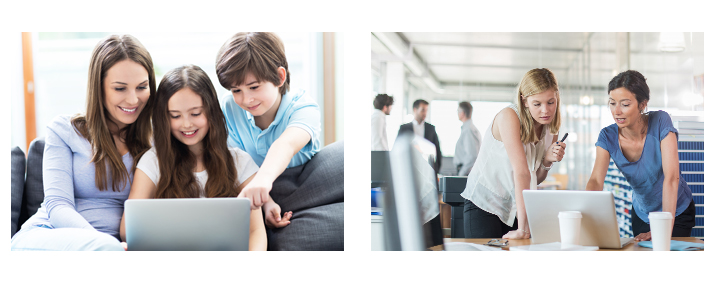Why Your Brand Designer Asks So Many Questions
A Great Brand Design Is Built on a Solid Foundation?
The visual identity of a business can’t just be what someone thinks looks good. An effective brand must: accurately represent the business; engage positive customer response; and differentiate the business from its competitors.
Branding is so important to the success of the entire enterprise that decades of market research have quantified every detail, from colors, fonts and shapes to the number of words in a slogan (7 max). The results of that research are what we use to craft a brand that does its job, now and for years to come. Here are some of the things we need to know about your business before we begin the design process.
What is your industry?
Whether you’re in the hospitality business or the financial sector will make a big difference in the choice of brand color(s), among other things. Blue is the most popular color for businesses that want to convey stability and integrity; in fact, it’s the most common corporate color overall. Here’s a quick rundown of branding color psychology: the brand values and industry sectors associated with each.

- Blue (secure, trustworthy): Finance, technology, energy, health care
- Green (wealth, health): Health care, energy, agriculture
- Yellow (light, happiness): Energy, hospitality, household
- Orange (fun, vitality): Health care, household, technology
- Red: (dynamic, passionate): Hospitality, automotive, retail
- Purple (royal, creative): Technology, arts/crafts, finance
- Black (sophisticated, upscale): Retail, automotive, technology
- White (clean, pure): Health care, retail
What is your business?
Within an industry, there’s a wide range of products and services being marketed, and customers being marketed to. A surgical equipment manufacturer and a wellness spa are both in the health care sector, but their businesses are very different. Target and Neiman Marcus are in the same business, but their customer bases are different; that’s why Target’s logo is red and Neiman Marcus’s is black.

You may have noticed that in the color list above some sectors appear more than once. That’s because the colors can be further refined to represent your specific business. A regal deep purple gives an impression of authority, whereas a light lavender purple creates a sense of spirituality. What’s more, two colors can be combined to produce the desired effect. McDonald’s combination of red and yellow is one brilliant example.
What is your mission?
Now we delve into the nature of what you do. Is it a trendy or rapidly evolving field? Or will your offerings essentially be the same five or ten years from now? Your answers to these questions will guide the decision on how time-sensitive your brand design should look, and how often you will need to update it.
In most cases, we believe that brand identity should not be built on a passing fad, unless you plan to go out of business as soon as that fad has passed. Even for sellers of the latest must-haves, it’s better to invest in a timeless image than one that will be considered old-fashioned in the not too distant future.
Let’s look at Target and Neiman Marcus again. The Target typeface is bold, clean and modern. Neiman Marcus uses a slim, elegant script font. Each of them is a perfect choice to appeal to the tastes, lifestyles and motivations of their customers, yet both are classic designs that won’t look dated.
Who are your customers?
A brand design must meet the expectations and desires of your target audience. Choosing a whimsical cartoon drawing for your logo is great if you’re advertising to parents of small children; not so much if your prospects are corporate decision makers.

The psychological principle behind this is called cognitive dissonance. When human beings see a discrepancy between their beliefs and their perceptions, doubt is created: about the entity causing the doubt and the wisdom of doing business with that entity. Would you buy a $50,000 diamond ring from a street vendor? No, you expect to see expensive merchandise in a high end store and don’t trust its value when you see it in a different context. One of the important goals of brand development is to prevent cognitive dissonance.
Who are your competitors?
Your brand should clearly differentiate you from others selling the same goods and services. That’s why we take a thorough look at who you’re competing with, to avoid accidental duplications. And we certainly wouldn’t intentionally copy any other business’s brand, no matter how successful; not just because it’s unethical, but because doing so would only lead to customer confusion, not conversions.
What are your marketing arenas?
Your brand design should look good in multiple media, from your business cards to your website to a giant trade show display. It should be easy to read on tiny smartphones and grainy newspaper ads. It should be visible when superimposed on different colored backgrounds that you might want to use in a magazine or TV ad.

These are all reasons why “less is more” is our brand design mantra. For legibility, scalability and recognizability, minimal outperforms cluttered every time. This applies to complexity of the artwork, number of colors, number of lines and number of words per line.
We create versions of the brand design for every medium it will appear in: color and grey scale, low resolution for email ads and high resolution for printed brochures, with and without your slogan, and any special situations that come with marketing your business. Costs of using the design will also be considered: it’s cheaper to print a one- or two-color letterhead than a full-color one.
The more we know, the smarter your design.
At ACS, we ask so many questions in order to deeply understand your brand’s platform and customers. Once we’ve done that, we can apply proven marketing strategies to designing a brand that will empower your marketing campaigns, customer response and ultimate business success.
And if you’re not sure of the answers, we have decades of marketing expertise to help you define your brand. Contact us today for a complimentary consultation.

